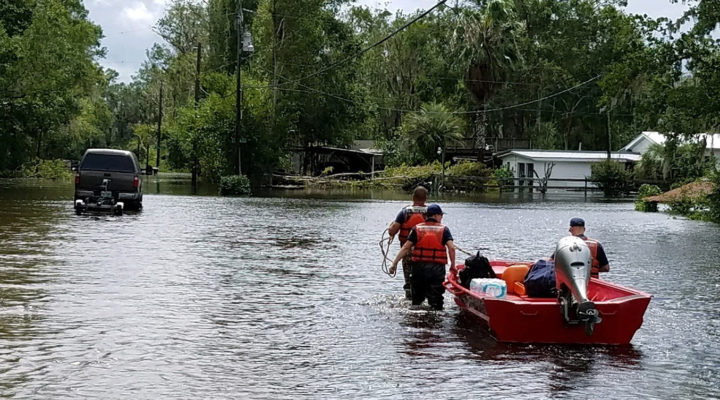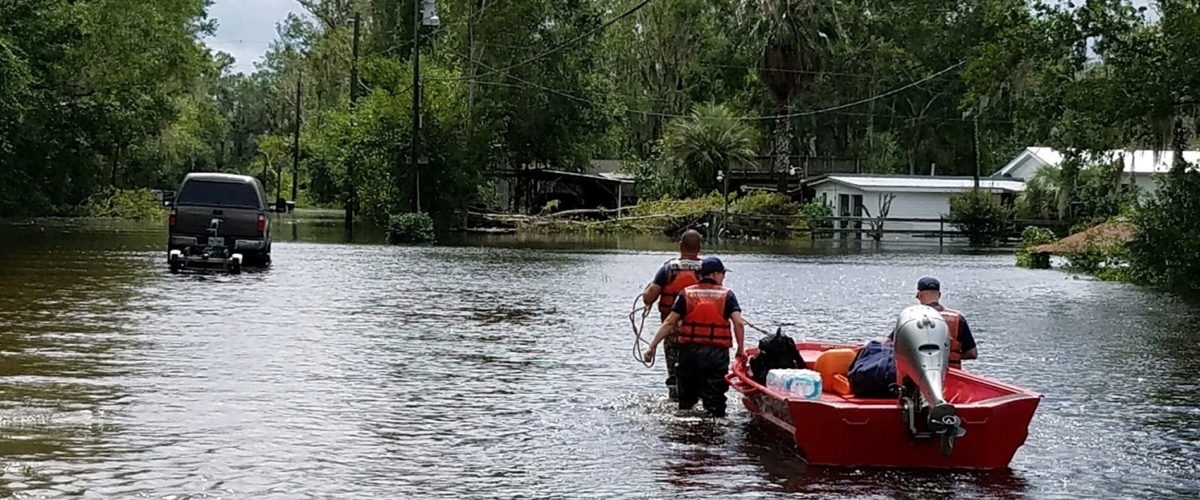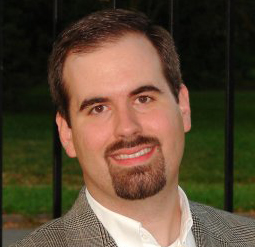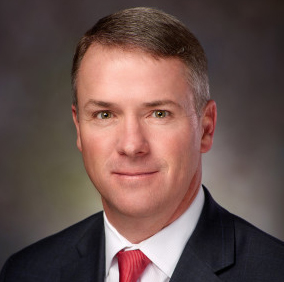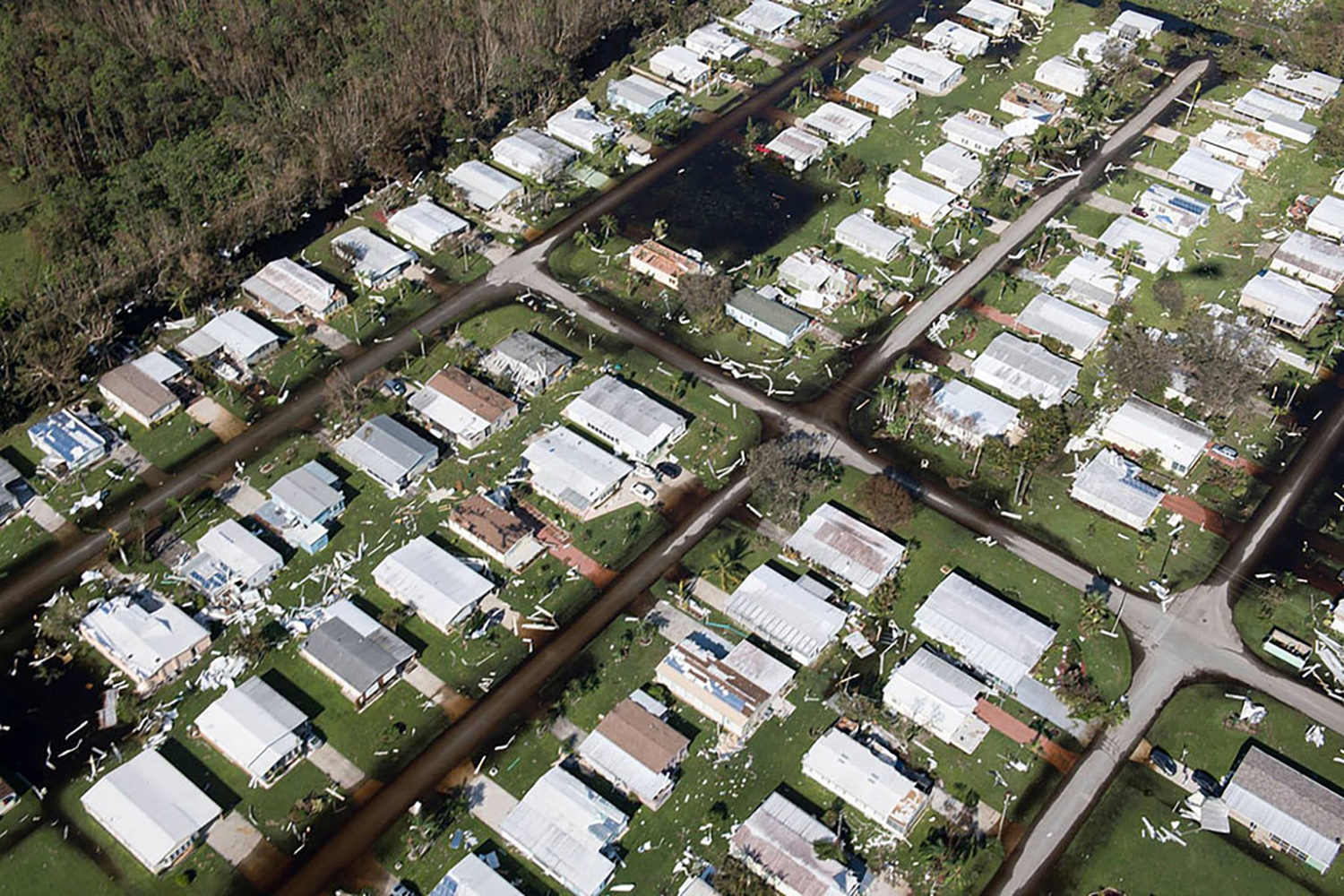Faith-based disaster response groups are admittedly feeling the major challenge faced in the aftermath of hurricanes Harvey and Irma.
“There’s a lot of chaos out there,” said David Harding, international disaster response coordinator for the Cooperative Baptist Fellowship.
Devastation in Texas alone already had religious groups wondering how it was all going to get done. A week or so later, a battered and drenched Florida posed that and another question: will there be enough people-power to go around for long-term recovery operations in two states?
“It gets overwhelming when you have back-to-back domestic situations like this,” Harding said.
But whether its Baptists, Catholics, Mormons or The Salvation Army, faith-based groups fixate not on the problems but on the opportunities that come with storms like Harvey and Irma.
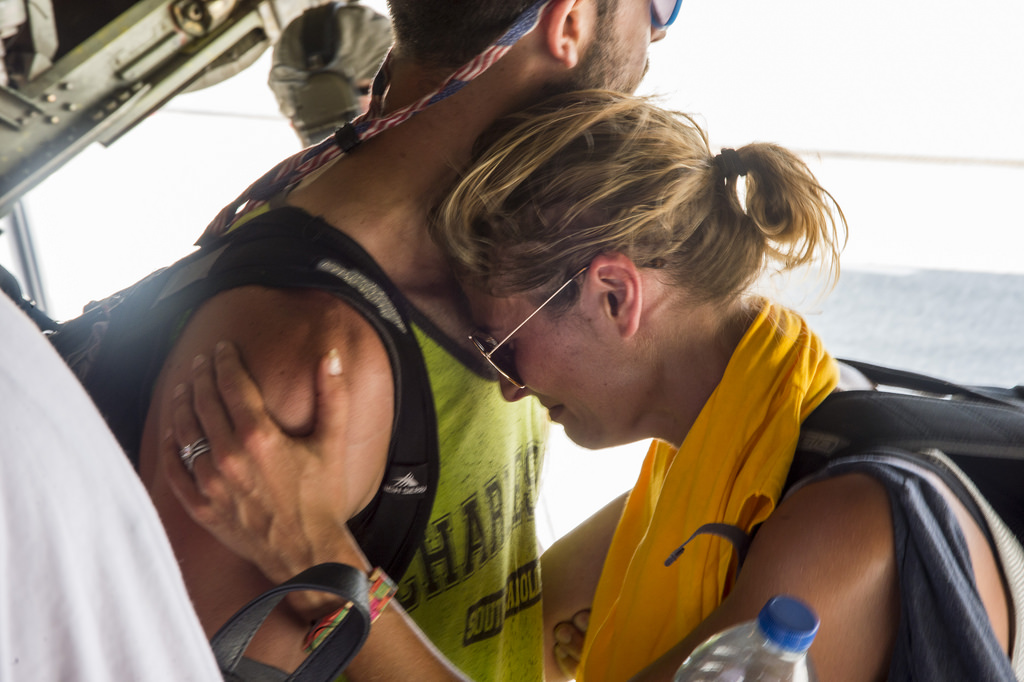
Victims of Hurricane Irma console each other. Faith-based disaster recovery organizations say they will rely on volunteer teams to clean up after Irma and Hurricane Harvey in Texas. (Photo/US Dept. of Agriculture/Creative Commons)
In Florida, religious organizations from within and outside the Sunshine State are already busy at work chopping up fallen trees, mucking out homes and providing spiritual care to hurricane victims.
In a lot of cases, churches got busy helping their members and neighbors immediately after them storm passed.
“This weekend, all efforts are focused on mucking out homes, removing drywall, and fighting mold,” Kevin Collison, pastor of Island View Baptist Church, shared in an email. The CBF congregation is located in Orange Park, Fla., adjacent to Jacksonville.
Island View is one of two congregations tapped by the CBF to serve as hubs for long-term recovery efforts in Northeast Florida. The other is Hendricks Avenue Baptist Church in Jacksonville.
As hubs — and there are others in Fort Myers and Miami — these congregations will host visiting volunteer teams for repair and recovery work expected to last months and years.
“Having been spared the worst of the storm, we are able to carry out that calling with those who suffered more notable damage, especially those who are vulnerable, poor, and not able to recover without many helping hands,” Collison said.
Local host churches do much more than provide accommodations to visiting volunteers. Because they are a part of the communities that have been ravaged, they can help direct workers to those most desperate for help, said Kyle Reese, pastor at Hendricks Avenue Baptist.
“Our folks will know the needs where CBF folks can do the most good,” Reese said. “Our congregation is part of the fabric of our community.”
CBF leaders say there will likely be no shortage of such teams for hub congregations to host in Florida — even with the huge needs in Texas.
Experience shows that volunteer teams usually come from states adjoining those where disaster has struck, Harding said.
Look for churches in Arkansas, Louisiana and Oklahoma, for example, to send workers to Texas, while Alabama, Georgia, the Carolinas and Tennessee will send cleanup teams to Florida.
“We already have people in Georgia, who weren’t impacted, who are on the way to set up staging areas [in Florida],” Harding said. “There is this real concern by those in neighboring states that they want to come in and help.”
“This is going to be a long road. It’s not just going to go away.”
Harding is coordinating the CBF’s response efforts in Florida and the Caribbean, while U.S. Disaster Response Coordinator Alan Williams handles the response in Texas, Georgia and South Carolina.
The Fellowship will tap into CBF Florida’s relationships in Cuba and the Bahamas to determine how it can respond in those areas, Harding said.
CBF Florida also will work with other religious groups, including the Alliance of Baptists, to help Irma’s Caribbean victims, Coordinator Ray Johnson said.
He added that Associate Coordinator Rachel Gunter Shapard is scheduled to lead a team to Cuba in November to deliver supplies and possibly to help with recovery work.
“We’re still getting word from Cuba on what the needs are,” Johnson said.
Harding offered a reminder that recover work is slow going — and even more so with two major disasters to contend with.
“This is going to be a long road. It’s not just going to go away.”

